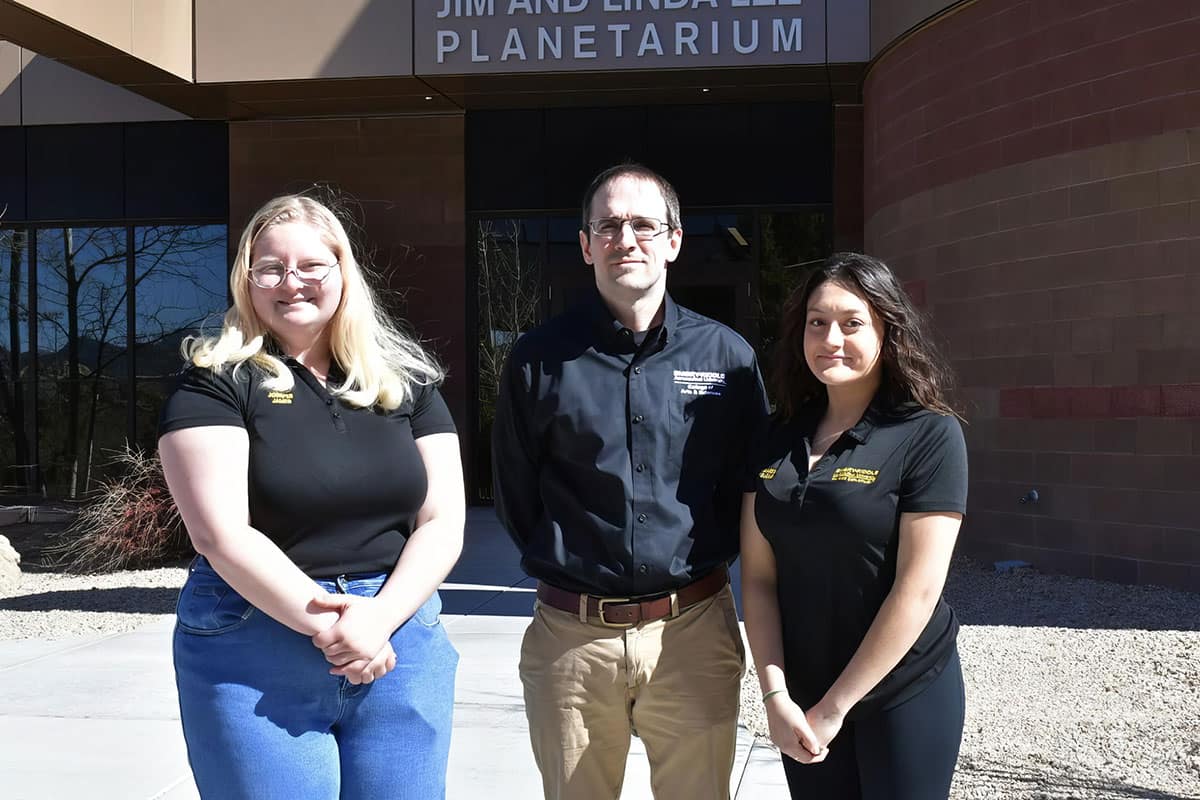Testing Gravity on the Tiny New Frontier of Physics

The new frontier of physics is infinitesimally small. But exciting discoveries are being made one micrometer at a time — even among some of the field’s most time-tested concepts, as an Embry-Riddle Aeronautical University team has found.
“What we are doing is testing gravity,” said Quentin Bailey, professor of Space Physics at Embry-Riddle’s Prescott Campus. “We want to see if the laws of gravity according to Newton and Einstein still hold true at very small scales.”
Isaac Newton’s universal law of gravitation explains gravity as a force of attraction between all matter. This is what causes apples to fall from trees and planets to orbit the sun.
But scientists in the centuries since Newton have begun to wonder if the physics that apply to apples and planets can change at the very smallest levels.
Over the past two years, Bailey led a team of undergraduate research students on a mission to discover what Newton never had a chance to test: How do the rules of gravity apply at the quantum level? Their findings have recently been published in the peer-reviewed journal Classical and Quantum Gravity.
“Newton came up with a simple law to describe gravity in terms of force,” Bailey said. “Physicists want to see if this law could be modified by measuring the force between two tiny little masses held close together and moved relative to each other.
“So far, Newton is correct,” Bailey said.
Based on the team’s experiments, gravitational forces appear to behave the same at micrometer distances as they do on a huge, universal scale. But many physicists like Bailey are interested to see if this holds at smaller, unexplored distances.
“We don’t know much about gravity at very small distances,” Bailey said. “We know it works on planetary scales and larger scales like solar system and galaxy scales, and even larger scales comparable to the size of the universe.”
You still might wonder, though: What can be learned from studying these micro spaces?
“It’s important to recall that most of the technology we have now is from physics experiments that seemed unpractical and useless a hundred years ago, but now we use them every day,” he said. “A discovery of some new gravitational physics and small-length scales could be the building block for something. … We just don’t know what that is yet.”
Those unknowns did nothing to dampen student researcher Janessa Slone’s excitement to work on the project.
“I think our work will benefit the physics industry as a whole. We're working to learn and develop more science and physics, more than what we currently know,” said Slone, who is from Elk Grove, California. “It's what we all strive for — to contribute something to knowledge, even if it feels little.”
From the student perspective, it is often easier to get involved with professors’ research in experimental physics rather than theoretical research.
“Students can go into the lab and work on experiments, but it’s much harder to do theoretical work because they don’t typically have the advanced background as an undergraduate,” Bailey said. “It’s a little bit rare.”
It was just the opportunity Slone was seeking. After getting hooked on physics in high school and learning about the research opportunities at Embry-Riddle, she said Bailey sparked her interest in theoretical physics with his enthusiasm for general relativity. For this project, much of Slone’s responsibilities consisted of checking the team’s work, which she said provided great satisfaction — especially when her work confirmed theirs.
Slone wants to continue studying theoretical physics and has applied to various graduate schools around the country with hopes of one day working for NASA or the National Laboratories.
“This project is insanely unique,” she said. “Embry-Riddle gave me the chance to showcase my talents and learn so much more as an undergraduate. … This research project is something that stands out on my CV and makes me an eligible candidate for similar projects in the future.”
The research team also included doctoral candidate Kellie O’Neal-Ault and Space Physics graduate Jennifer James (’22).
James is now pursuing a graduate degree at Vanderbilt University. She credits her undergraduate research with providing a pathway to success.
“As an early career scientist, I am thankful that I got a head start during my undergraduate career at Embry-Riddle,” said James, who is from Peoria, Arizona. “Though my area of study has now changed to hot-nuclear physics, I’ve found my overall framework of thinking is due to my early start with Dr. Bailey and our research at Embry-Riddle.”
For more information about the team’s work, read the paper titled “Short-range forces due to Lorentz-symmetry violation” online, or visit Dr. Bailey’s research site.

 Everly Chadwick
Everly Chadwick